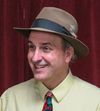Lone Mountain
Today the site of the University of San Francisco, in 1892 Lone Mountain was a scrubby cross-crowned hill.

Looming up, Lone Mountain lifts
Its cone against the sky,
And softly through the broken rifts
The sunlight for a moment sifts
And gilds the Cross on high.
— General Lucius Harwood Foote
Sometime in 1892, Isaiah West Taber lugged his large camera and tripod to the southern fence line of Laurel Hill Cemetery and took this story-filled shot of Lone Mountain.
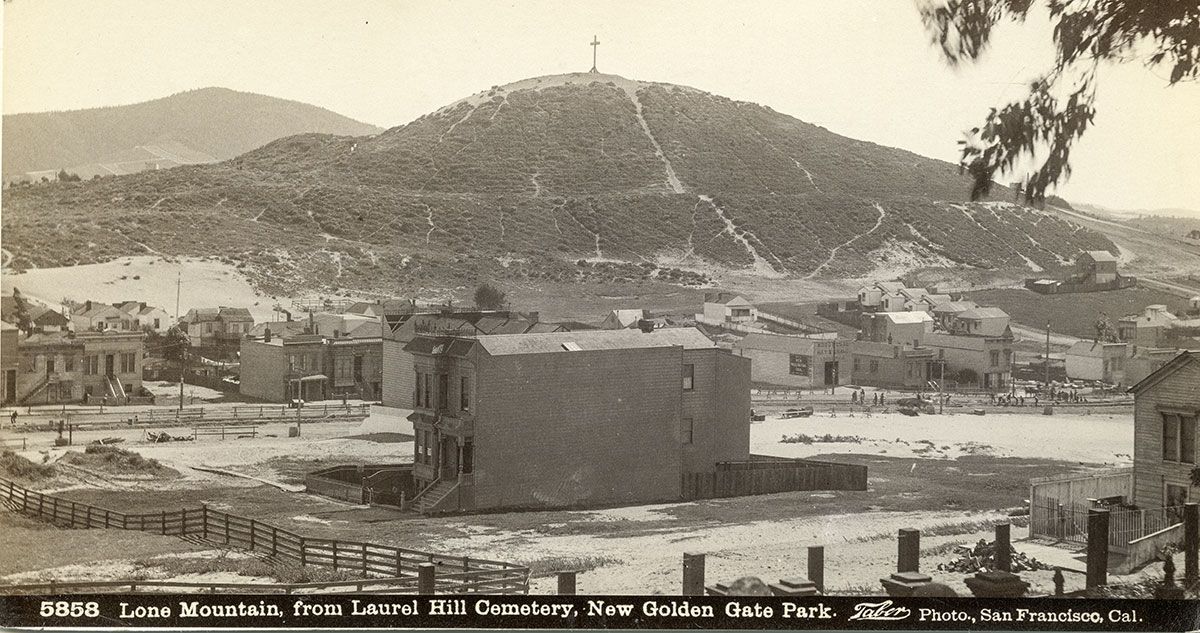
I saw it for the first time last month, surprised and stunned. Taber was San Francisco’s premier commercial photographer in the 1880s and 1890s. His prints, photo books, and souvenir cabinet card images are valued gems in the collections of local libraries and archives. How did such an amazing view somehow escape me over 25 years of research?
Let’s get everyone oriented. You know that tall storage-unit building on the corner of Masonic Avenue and Geary Boulevard? It is next to the Trader Joe’s store and looms over the abandoned and graffiti-covered Lucky Penny coffee shop. Taber’s photo was taken a block to the west of that building. From the top of Wood Street, he pointed his camera south over what was then Point Lobos Road, now Geary Boulevard.
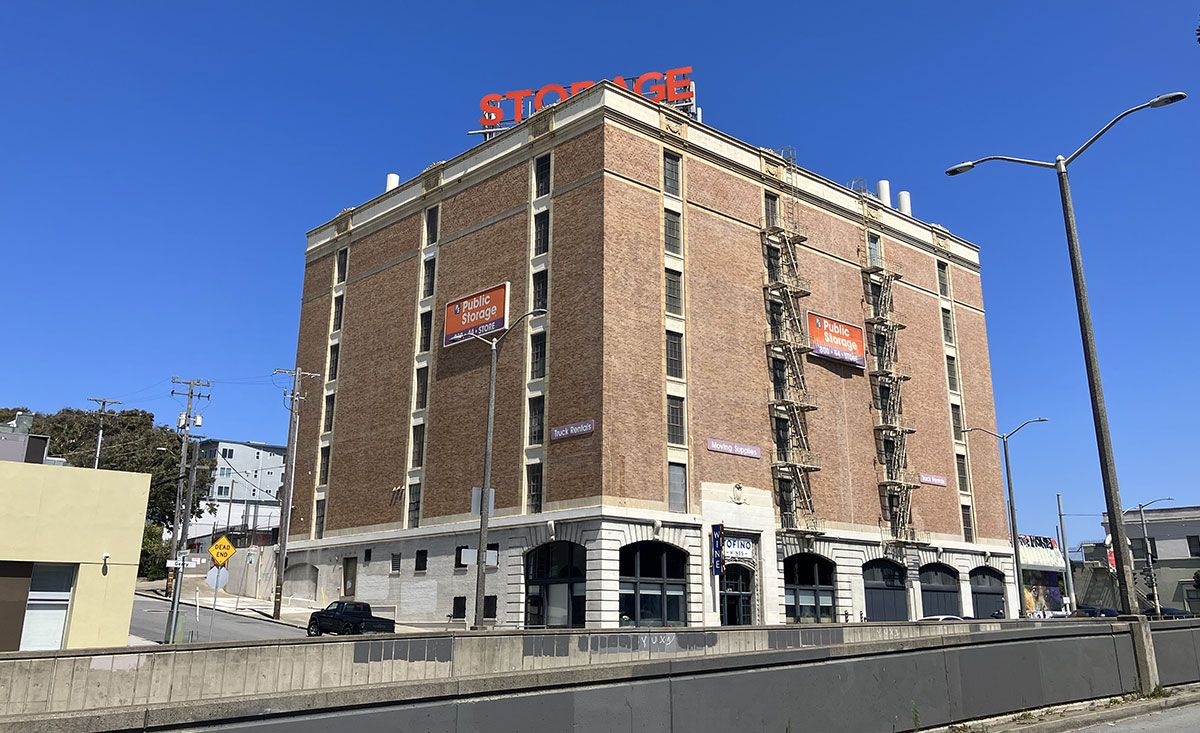
Today Lone Mountain appears as a wall of building windows, eucalyptus trees, and a square tower with a pyramid topper. The Lone Mountain campus of the University of San Francisco subsumes and engulfs most of the formally scrubby, sandy hill:

In the 1892 photo the natural environment of the area is as prominent as the infrastructure work underway. Sand and scrub are everywhere and you half-expect a tumbleweed to roll across the scene. The various small paths up Lone Mountain brought walkers and riders up to what journalist Frank Soulé described as “one of the finest and most extensive views of land and water.”
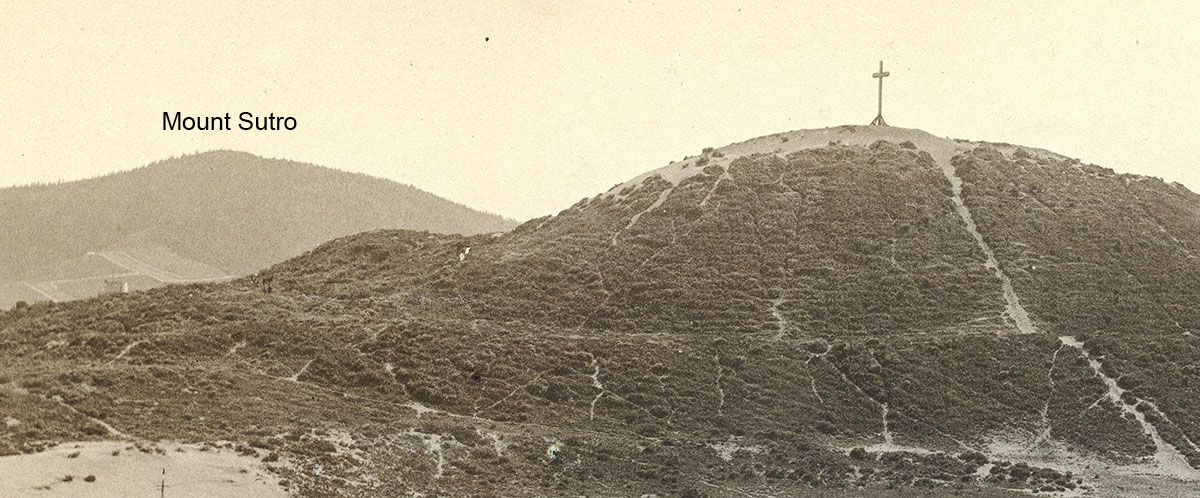
Less fun, the view and cross made it a popular place for suicides. Oh well.
Lone Mountain is the star of Taber’s shot and the photo caption reflects that, but the end of his printed description seems more about marketing a souvenir. The “New Golden Gate Park” (not so new in 1892) is not seen at all, unless you count the speck of trees in the distance at the very right edge of the photograph.

The activity on Point Lobos Road (Geary) is what nails down the year of this image. Men are laying new tracks for the Geary Street Park and Ocean Railroad (GSPO). For years, GSPO riders to Golden Gate Park had to transfer from cable cars to little steam engine trains at Presidio Avenue and Geary Street. From January to August 1892, the company finally extended the cable line to 5th Avenue. There the tracks took a left and terminated at Fulton Street and the park.
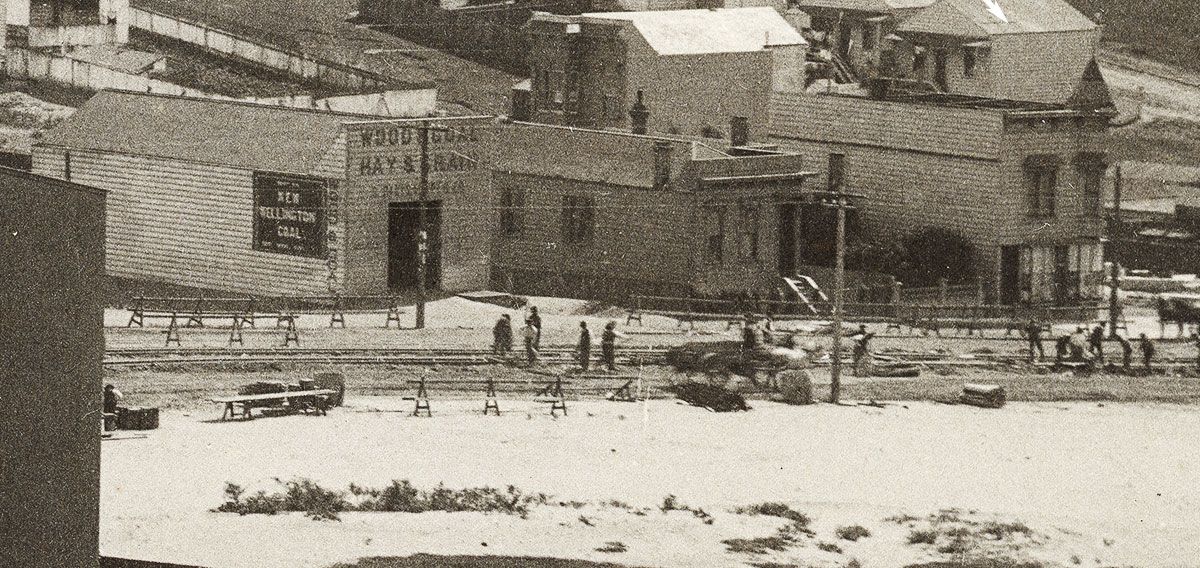
At the time of this photograph the Richmond District was in the middle of its first real building boom. Sewer work had started to combat cesspools which frequently formed in the dunes between Cook Street and Arguello Boulevard. Eight 40-foot-high street lights—“electric masts”—had been installed along the stretch in 1888 and we can see a couple in the photo.
I wish we had a slightly broader view, because the edge of the corner building now housing the Pig and Whistle pub at Wood Street and Geary Boulevard is just visible at the far left:
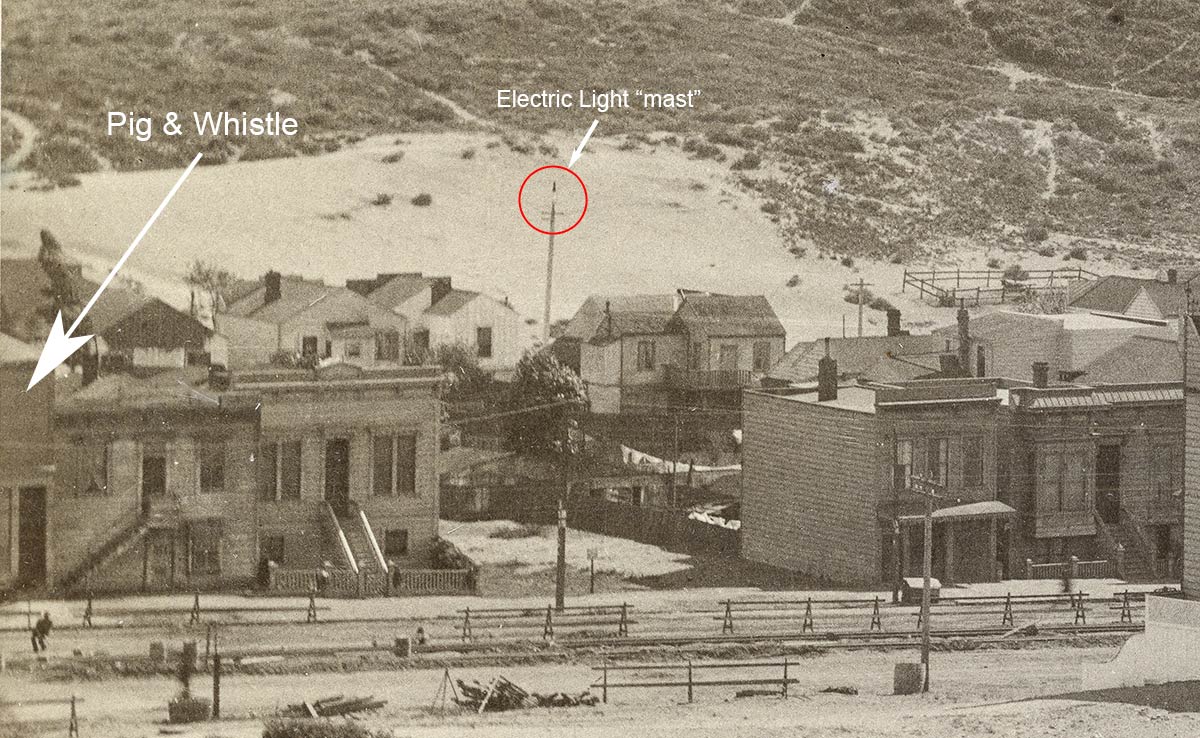
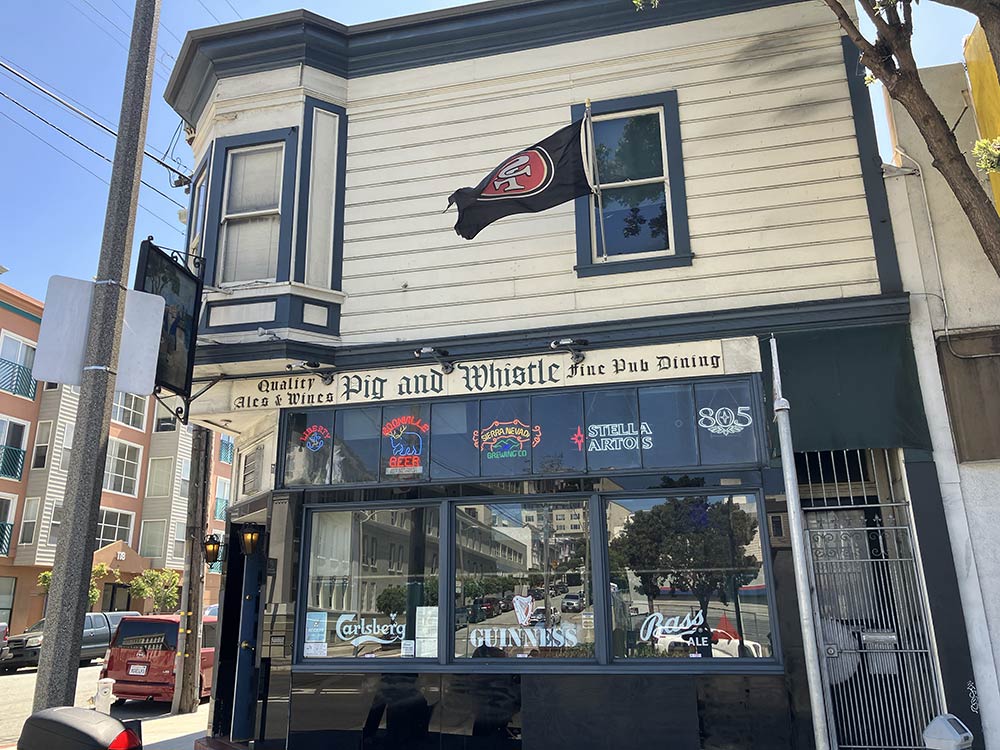
Like the Pig and Whistle building, many of the structures in the photo are newly built. The prominent two-story building in the foreground has one of its two flats advertised for rent with signs in the window and on the fence:
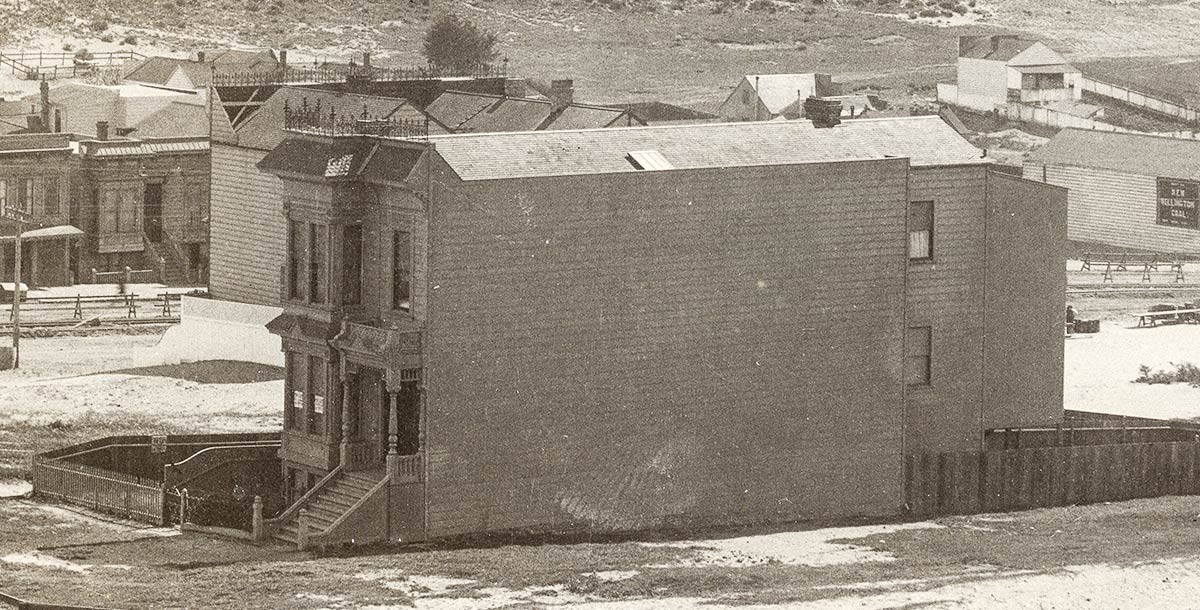
Most of its handsome details are gone, including that great entry portico, but the building still stands at 57-59 Wood Street.
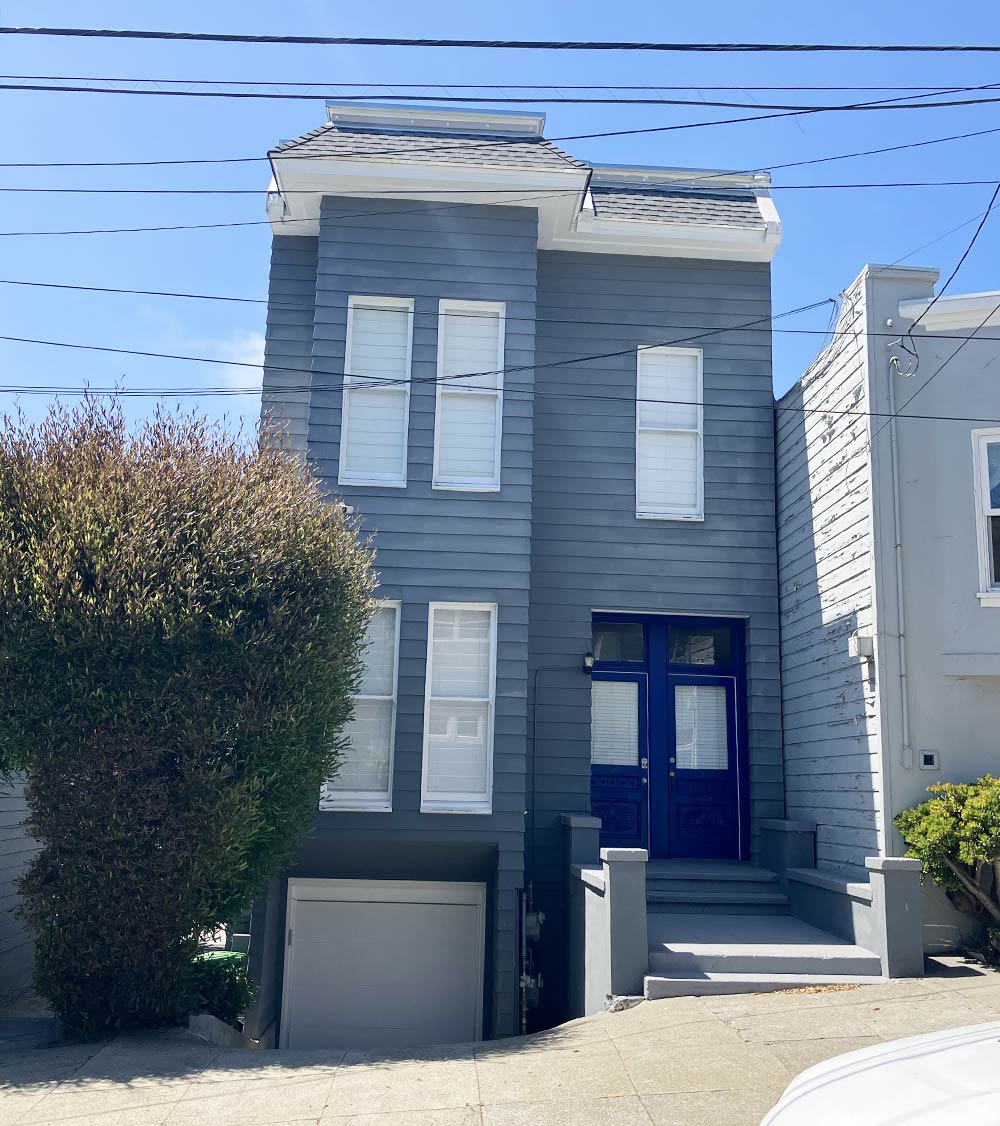
In the early 1890s, a 25 x 100- foot lot around Lone Mountain would set you back about $600—$20,000 in 2023 dollars—although some aggressive real estate firms tried for twice that amount. Contracting someone to erect a cottage or set of flats on your new property would cost you somewhere between $1,500 and $2,500, which is $50k-83k in today’s money…not so bad...
Cross-Crowned Hill
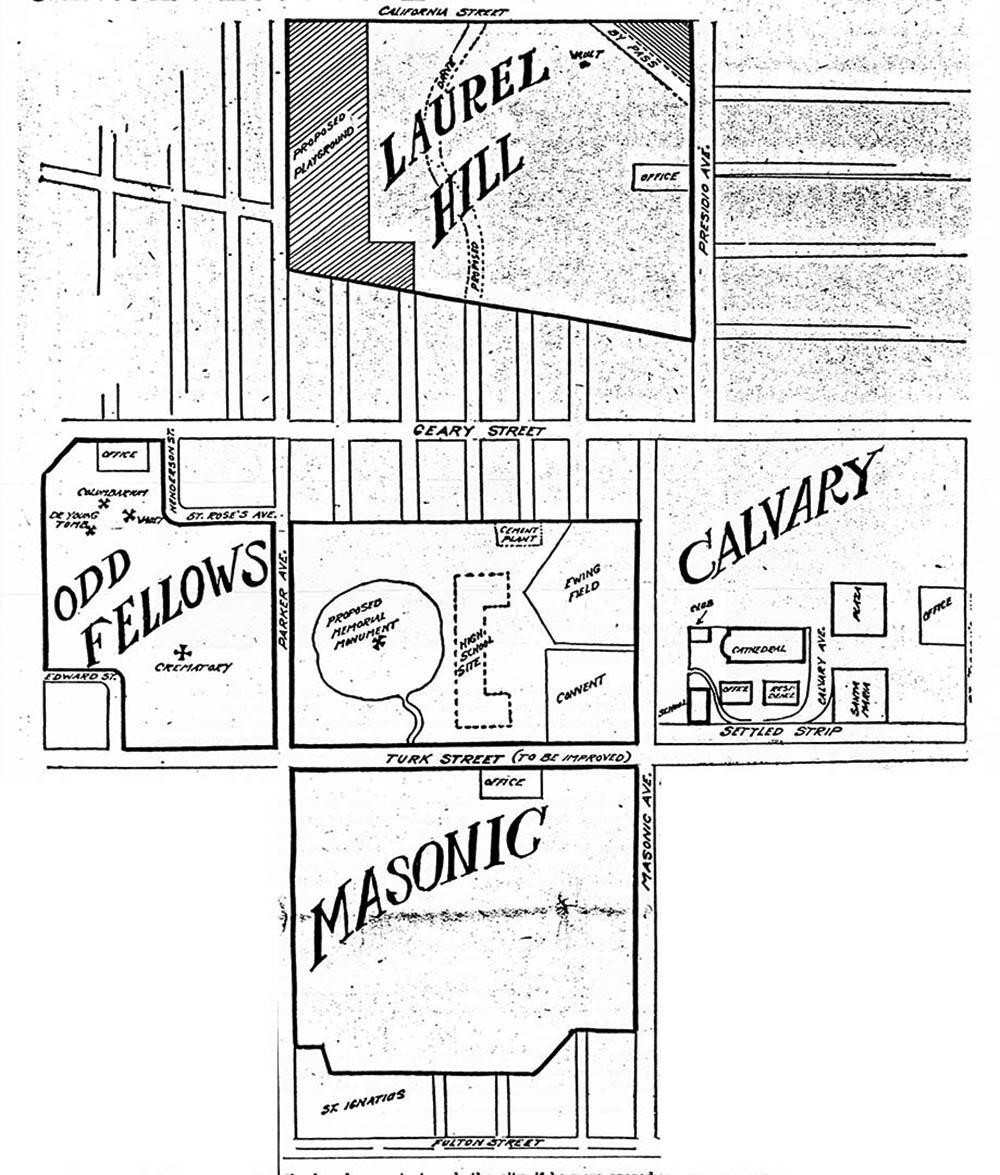
While no cemeteries were established on Lone Mountain itself, four big burial grounds nearby gave the cross-topped hill an identity connected with death, endless sleep, and the afterlife. To be described as “at Lone Mountain” in a conversation, an article, or a poem, meant you had passed from this earthly realm.
The often-foggy hilltop, surrounded by the land of the dead, inspired a good number of moody poems. One by Louis Alexander Robertson starts:
“Thou cross-crowned hill, to which I often turn,
Although no dead of mine lie slumbering there,
I watch the western skies behind thee burn,
And my pale lips are parted with a prayer”
Other than a small bit of Laurel Hill cemetery fence in the foreground, in the photograph the only evidence of the boneyards is visible between the tree branch leaves at upper right. If you squint you can see the water tank of the Odd Fellows Cemetery and an obelisk honoring Samuel H. Parker, a grand master of that fraternal order. Both were near the summit of today’s Parker Avenue.
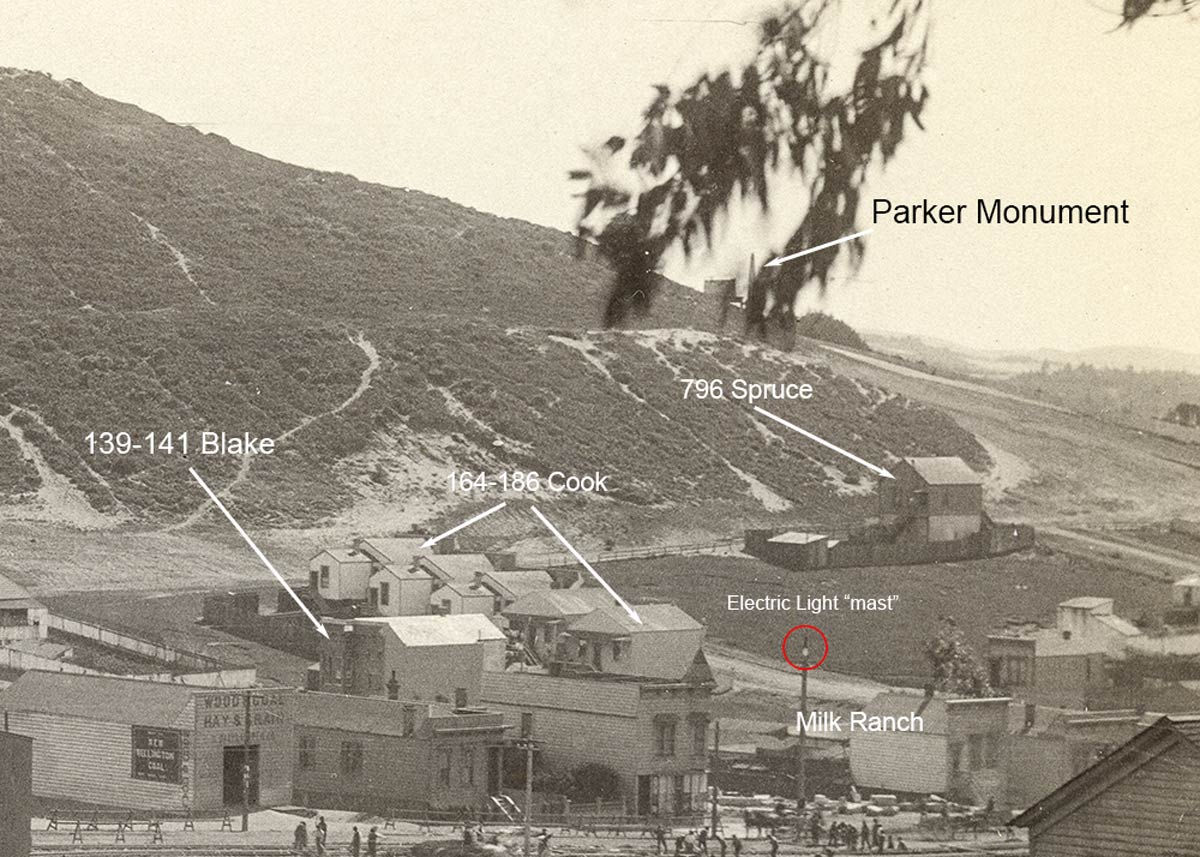
The cross at the top of Lone Mountain was one of several built on the 468-foot prominence. The first was constructed in May 1862 by James Doyle at the behest of the Catholic archbishop. That original was burned by vandals in 1872. Replacements blew over in storms in 1887, 1900, and 1916.
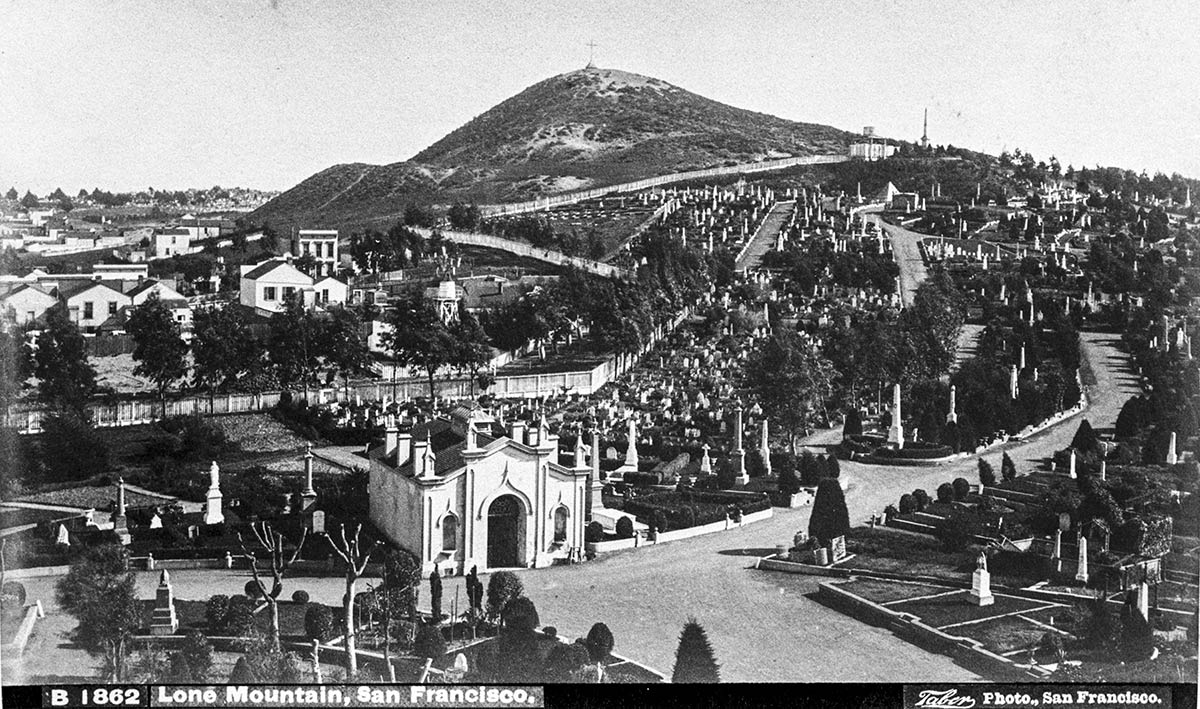
The last freestanding cross came down along with the conical summit in 1931 when 75 feet of Lone Mountain was shaved off for the San Francisco College for Women. When architect H. F. Minton announced his plans for the 23-acre campus in 1929, there were some promises that the hill’s cross would be salvaged and placed atop the school’s central tower.
Any examination of the ornamental metal cross that surmounts the Spanish Gothic Revival building quickly scouts this idea. The women’s college closed in the late 1970s and the neighboring University of San Francisco took over the campus in an expansion.
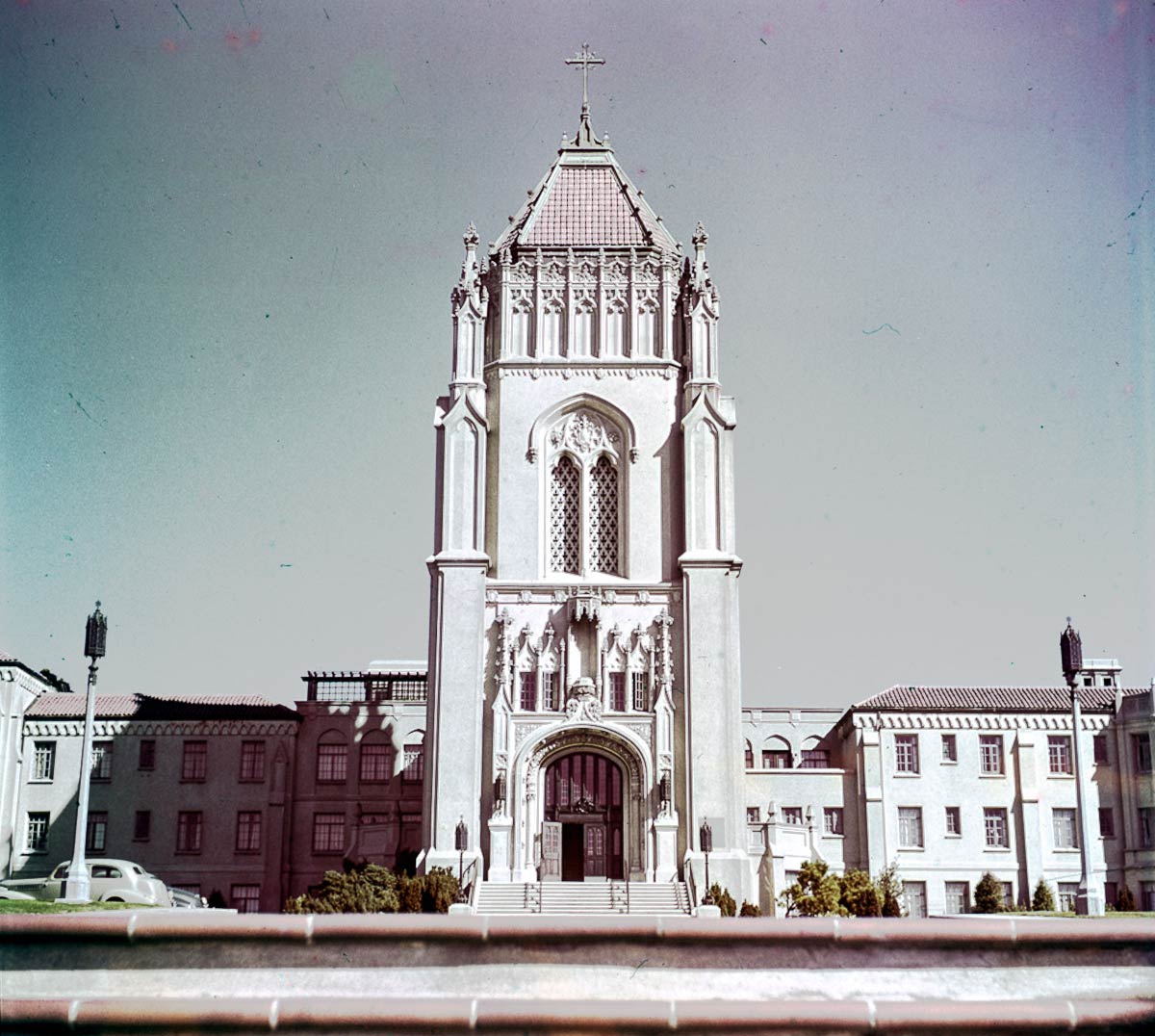
The end of Mr. Roberston’s poem:
“When I shall rest beneath thee evermore,
And cold, gray fogs drift o’er me from the deep,
Perchance—who knows?—the voices of the sea,
Rolling in deep-toned music from the shore,
May not be all unheard in that last sleep,
Murmuring a long-low slumber-song to me.”
Mr. Robertson does not rest evermore in the shadow of Lone Mountain. All the Lone Mountain cemeteries were condemned and built over by the middle of the 20th century.
Do you hope to hear the sea’s slumber song after your death? The best you can do is have your ashes deposited in the old Odd Fellows Columbarium at 1 Lorraine Court, now run as a private concern. That’s my plan.
Woody Beer and Coffee Fund

I have done great work spending down the corpus of the Woody Beer and Coffee Fund on lattes, lagers, and conversation with friends old and new. It has meant that I am peeing more than usual, but if that is the price I need to pay to be sociable...
Keep me hydrated and let me buy you a beverage before I take off to Mexico City in mid-September.

